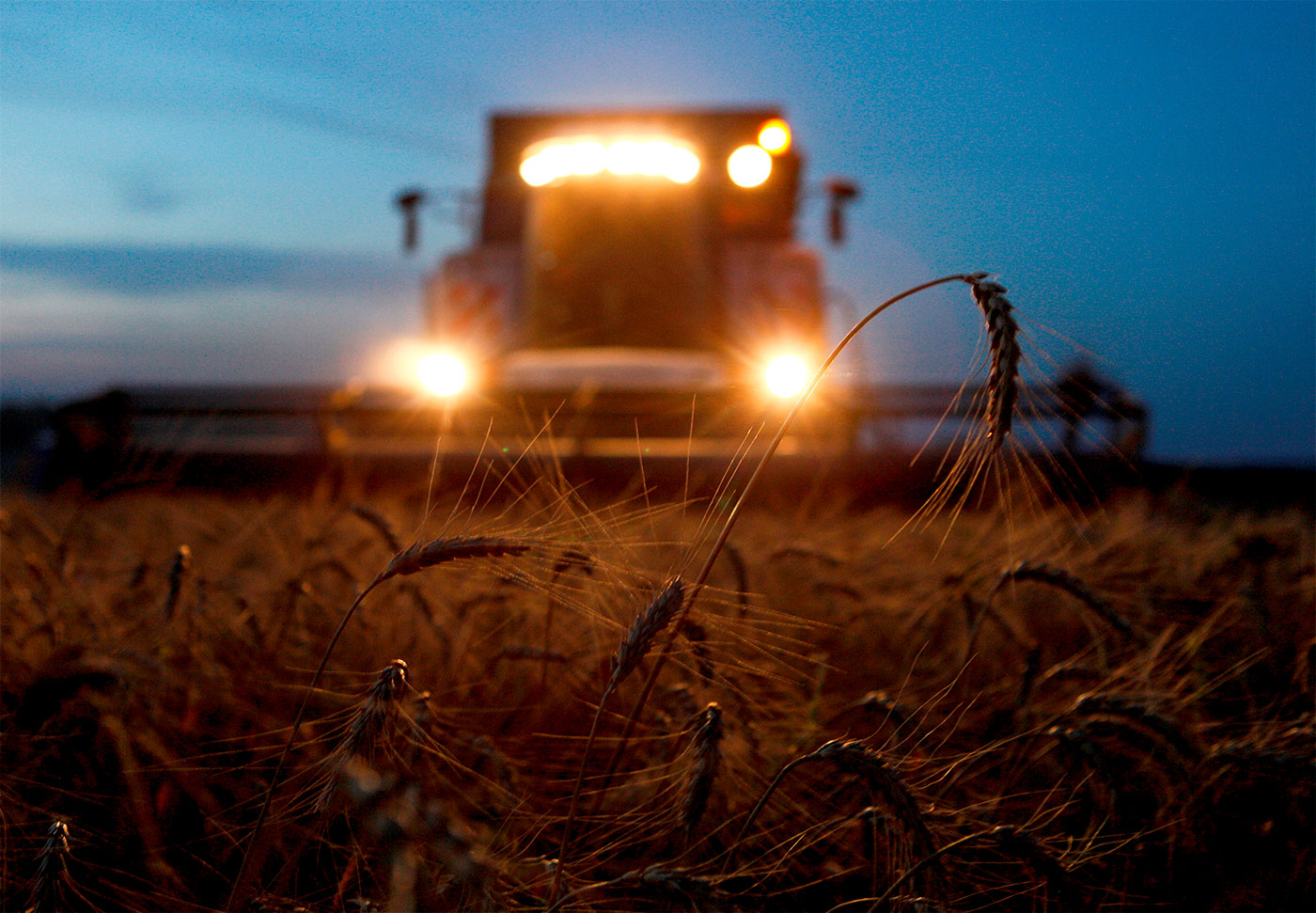Grain Keeps Rising
(no votes) |
(0 votes) |
RIAC Expert
In 2016, Russia, known for many centuries as a supplier of grain to Europe and the world as a whole, became the leading exporter of wheat. This fact would seem to be a natural consequence of the country’s size and the quality of its soils, but the history of Russia’s grain exports – and its exports of wheat in particular – is primarily a tale of painful declines followed by upturns.
Russia’s primacy is due to many factors: France has had too much rain, and the rise in acreage sown to wheat in the USA has slowed, while in Russia weather conditions have been close to ideal. But even so, looking at the bigger picture it’s been obvious that Russia would be joining the club of leading wheat exporters. Eight years ago Russia’s exports were comparable with Canada’s, taking into account seasonal fluctuations, but in the last three seasons Russia has been competing with the USA for first place (see Figure 1). According to the US Department of Agriculture’s Foreign Agricultural Service, in 2016/17 Russian wheat exports will be 25.5 million tonnes, giving Russia a 16% share of the global market.

Figure 1. The world’s leading wheat exporters in 2009-2017 (million tonnes).
Source: Foreign Agricultural Service, USDA.
Russia has traditionally been one of the world’s main grain exporters, and it was the undisputed leader until the USA consolidated its position in the European market in the 1880s. Despite its relative technological backwardness, its under-developed transport infrastructure, the lack of a system for storing grain, the occurrence of famine and other challenges, in the last third of the nineteenth century the Russian Empire was producing 25-30% of the world’s wheat. A domestic market for wheat also started to appear, although traditionally rye, oats and barley were the dominant crops in Russia. There were often doubts about the quality of Russian grain, since a large number of speculators had entered the Russian market, but nevertheless the Russian Empire was competing with the United States for Europe’s markets right up to the beginning of the First World War.
In the years that followed Russian agriculture suffered many blows. First the Provisional Government introduced a state monopoly on grain on 7 April 1917, which was later maintained by the Soviet authorities. The dispossession of the kulaks, the purges and collectivisation effectively closed the door on all enterprising agricultural workers. In Stalin’s time exports continued because of the need to obtain foreign currency. The practice of importing grain in parallel with exporting it began at the end of the 1950s – before this it had been used only in the first years of Soviet rule, in the context of the 1921 famine. The gradual withering away of grain exports reached its peak in 1991—1993, when the economic collapse in the Russian Federation meant nothing at all was exported. Since then, however, and especially since the start of the new century, there has been a gradual rise in the production and export of grain as a whole and of wheat in particular.
A striking example of Russia’s success in exporting wheat can be seen in Egypt, which regularly invites tenders to supply grain so that it can supply its population with cheap bread. France has traditionally been regarded as part of France’s domain for wheat exports, but in 2016, largely as a result of problems with quality, this wheat has been supplied by Russia, Ukraine and Romania. The level of rainfall on France’s wheat acreage in May—June 2016 was twice as high as normal, in a number of regions breaking records that had stood for more than 50 years. The main challenge for France will be not the quantity of its wheat (the acreage sown in 2016 was the highest since 2008) but the quality.
Abundant rainfall often causes crops to lodge, rendering wheat unsuitable for human use and leaving only one use for the grain – feeding cattle. Rain also brings an increased risk of spreading Septoria, fungal disease affecting wheat leaves and ears, and Fusarium causing the wheat’s roots to rot. The southern regions of Germany, which have also suffered from excessive rainfall, are running into similar problems, albeit to a lesser degree.
Agriculture is the only sector of the economy to show a rise in exports in the first quarter of 2016. It has managed to benefit from the falling exchange rate of the rouble and the Russian leadership’s reliance on import substitution in the context of foodstuff sanctions in relation to the member countries of the European Union. Wheat is the most striking example: the main wheat exchanges are in Chicago and Paris and consequently they trade in dollars and euros, while Russian companies’ costs are calculated in roubles. Thus in 2015 there was a substantial rise in the profit achieved by Russian agricultural exporters.
In 2015 Russian agriculture achieved a net profit of 272 billion roubles, a rise of 45% on the previous year, 2014. Some even more impressive achievements should also be noted: fisheries and fish-farming showed a 310% rise in profits (total profits were 62.7 billion roubles). In the context of the overall economic recession and low global energy prices, people are beginning to say that agriculture is “Russia’s new oil”.
For the last two years the grain harvest in Russia maintained a level of 105-106 million tonnes. Notably, before this the harvest had only reached more than 100 million tonnes in the very favourable years of 2008 and 1992. According to a fairly cautious forecast by the Ministry of Economic Development, in 2016 the cereals harvest should be 106 million tonnes, although by 12 August the country had already harvested more than 70 million tonnes, which is one-third more than the equivalent figure for 2015.

REUTERS/Eduard Korniyenko
A combine harvests wheat in a field in the settlement of Novokavkazsky in the Stavropol region, Russia, July 7, 2016.
In the first four months of 2016 Russia increased the physical total of its agricultural exports by 30.5%. The Russian authorities are expecting grain exports in 2016 to reach 36.9 million tonnes, but the favourable market situation may help the country to achieve record figures. For comparison, Russia will export more grain in 2016 alone than in the whole period of 1991-2002. In view of Russia’s colossal potential, however, Agriculture Minister Alexander Tkachev’s aim is to pass the 50-million-tonne mark for grain exports.
Signing an agreement with China on exports of grain and grain-based products could be a landmark on the path to achieving this target. The PRC, which is the world’s leading producer of grain (see Figure 2), currently has a ban on grain imports, which was imposed in 1976 because of the inadequate quality of the grain. The removal of this ban, which is now being discussed as part of the bilateral negotiating process, would allow the Altai and Krasnoyarsk territories and Novosibirsk and Omsk regions to supply grain to China’s markets. Kurgan region has also declared its interest. There is still the question, however, of whether the Russian negotiators will manage to agree on exports of grain-based products to the Chinese market (flour, groats, macaroni foods), which generate a high level of added value. Diversification of supply routes would also help to balance out the export routes, since approximately 80% of Russian grain is currently delivered via Novorossiysk.

Figure 2. The leading wheat producers in 2009-2017 (million tonnes).
Source: Foreign Agricultural Service, USDA.
How quickly this level will be reached depends primarily on how long the current level of the Russian currency will persist and to what extent the Russian authorities will resist the inevitable, albeit slow, strengthening of the rouble. The Russian economy is currently looking stronger than it did in February 2016, when the weighted average exchange rate of the dollar stood at 82.97. In August 2016 the Central Bank of Russia saw the first signs that the country was emerging from economic recession and transitioning to economic growth, forecasting a growth of 0.4% in the third quarter of 2016. Despite the improvement in the economy, representatives of the agricultural sector of Russia’s economy can view the future with optimism, since it looks as though the government and the president intend to continue holding back the strengthening of the rouble. Thus the difference between the cost of Russian and other varieties of wheat (the difference between Russian and French wheat in August 2016 was approximately 20 dollars per tonne) will be maintained in the medium term.
Grain exports are an indicator of the state’s economic power. Even if there is a sharp leap forward in global agricultural markets Russia will not lose its status as a resource superpower, but this is perhaps nothing to be ashamed of. The world’s leading wheat exporters (the United States of America, Canada and Australia) are highly developed economies in which the services sector is predominant. To find oneself in this company and to head this list on a permanent basis is worth a lot.
(no votes) |
(0 votes) |




